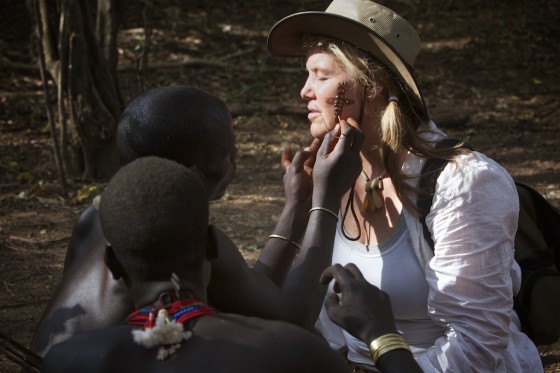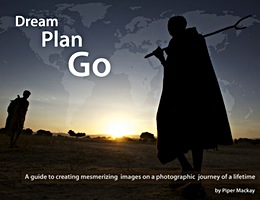I have been busy preparing for my series of classes at Calumet…. Travel and editorial series….if you are in L.A. the first class is this saturday, April 28 and will be jam packed with information, you can view the details here
For those of you that are not in L.A. or are unable to attend I thought I would share with you my top 10 must do’s for a successful remote photographic expedition…..

1. Do your research. Taking an international trip to an exotic location, especially if you are going solo, can be a large investment. Whether you choose to go solo or join a group you need to take proper time to do your research. There are many area’s that I have researched for well over a year prior to committing to the expedition. When is the best time to go, are there events or festivals at certain times of the year, is it the rainy/dry season, how does that effect the roads and the environment that you are shooting in, how far are the accommodations from the subject you are photographing? Take the proper time to ask all the important questions and learn all the details to maximize your photographic opportunities.
2.Find the right guide. YOUR GUID WILL MAKE OR BREAK YOUR TRIP This is critical so either team up with someone who has been there or do your research. Search for guides on google, in travel and photography forums, and through sites like flicker. Try to get to know your guide by email first. Once in the country meet for tea or coffee and test their knowledge and experience. Have they worked with photographers before? How flexible are they and can they take you to where you want to go and get you there on time? Do you feel safe with this person, can you trust them with your life? Take time to negotiate a price with them, in most cultures this is part of the relationship building process.
3. Know your outcome. Just going to enjoy taking photographs would be ideal but, if you are doing this professionally then you need to manage your expectations by knowing in advance what your expected outcome is. Are you taking stock travel shots, editorial, fine art, or all three? Create a shot list in advance so that you can check from time to time to make sure you are covering everything. Include the simple basics such as Vertical, horizontal, cover, wide angle…. this is to help you, not hinder you. When you get to an exotic location the excitement and adrenalin are rushing and you don’t want to come and home and say – why didn’t I shoot more verticals, cover shots, opening shoots, food, etc.
4. Get organized. Don’t spend all your time frantically searching for stuff and miss out on photo opps. Organize your photo bag so everything has a place/pocket and always put it back in the same place. However that does not always happen so decided on ONE convenient go-to place in your photo bag, side duffle pouch, a separate bag, an area that can be with you everyday and when you are in too much of a hurry throw it in there but then put it back where it goes before heading off for sleep. For Items/Accessories that are not going into your photo bag, categorize them and put them in separate bags. I have different color bags; one holds chargers, one holds audio, one holds cell and internet accessories… I think you get the picture…. I always know were everything is right when I need it.
5. Back up and Back it up. Have a back up workflow and stick to it. Download in the evening, lunch, twice a day, whatever works best for you, but do it consistently the same way/time everyday. Make a minimum of two copies and three if possible. Keep one copy on you and one copy in a separate bag or with your guide, just like off site storage. When flying keep one copy on you and one under the belly. If something were to happen and a bag is stolen then you would have another copy somewhere else. Bring back up batteries, camera body, card reader and the likes.
6. Slow Down. When you arrive in the big city, if possible, drive to your remote location and use the time to slow down, decompress from modern life, let go of your preconceived idea’s, and get into the rhythm of the culture and place. Plan to arrive at midday when the light is harsh, leave the camera in the car and just wonder about getting a sense of place. If you are photographing people take the time to meet them, have tea, show interest in them and their lifestyle.
7. Participate You will create more compelling images when you experience what you are photographing. If you are going to an event or festival put down the camera, participate, experience the moment and then photograph the experience. If you are photographing indigenous cultures, sit and have a meal with them, immerse yourself into their lives and culture and your images will be more powerful because of the connection you have with your subject.
8 Work the Light. Use different light sources to create an extraordinary photograph of an extraordinary subject or place. Use reflectors to bounce golden light or diffusers to soften shadows. Use fill flash or even better take that flash off camera. Try underexposing the background and using off camera flash with jells to light your subject for a very dramatic image. Paint with light, even in a remote location. Photographers tend to want to pack light and leave these type accessory items behind, but these are exactly the items that can add drama to your images and make your travel images stand out from the crowd.
9 Look. Don’t forget to look behind you as that maybe where the best shot is. When photographing people I have deliberately set up shots against the light anticipating the behavior that may occur behind me and then I turn around and grabbed a great natural moment. Lie on the ground and shoot up, climb a tree and shoot down, change your perspective and change the outcome.
10 Remember, more than a photograph is the experience. A great photo does not have to be new, it has to be you; your vision and your experience.






Great piece, Piper. Food for thought and sound advice.
I linked to it on my blog HERE